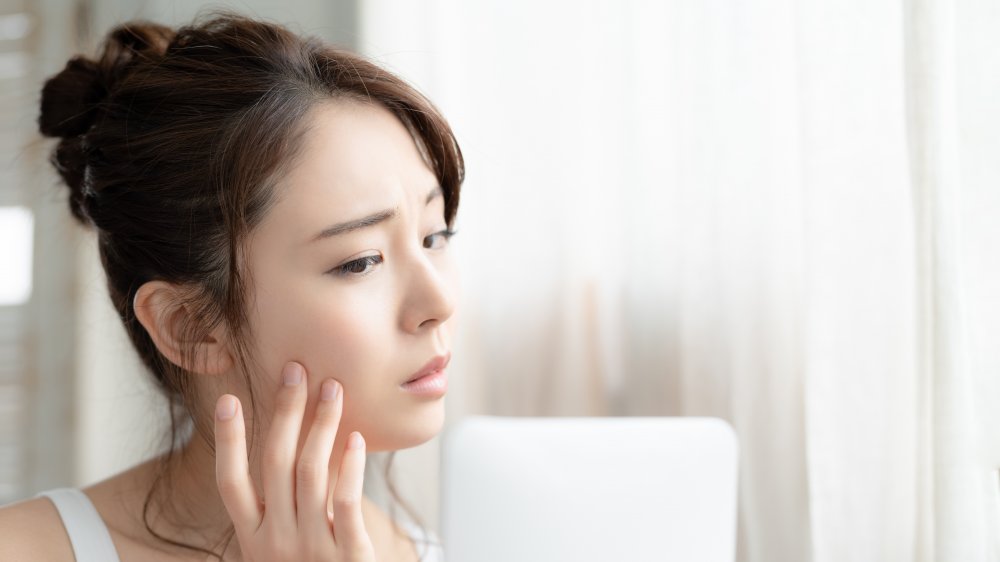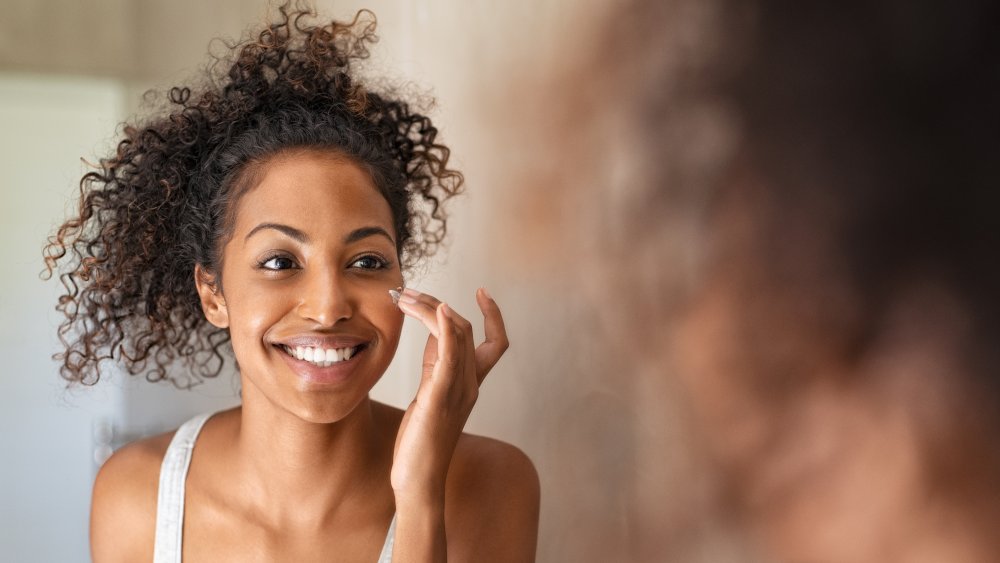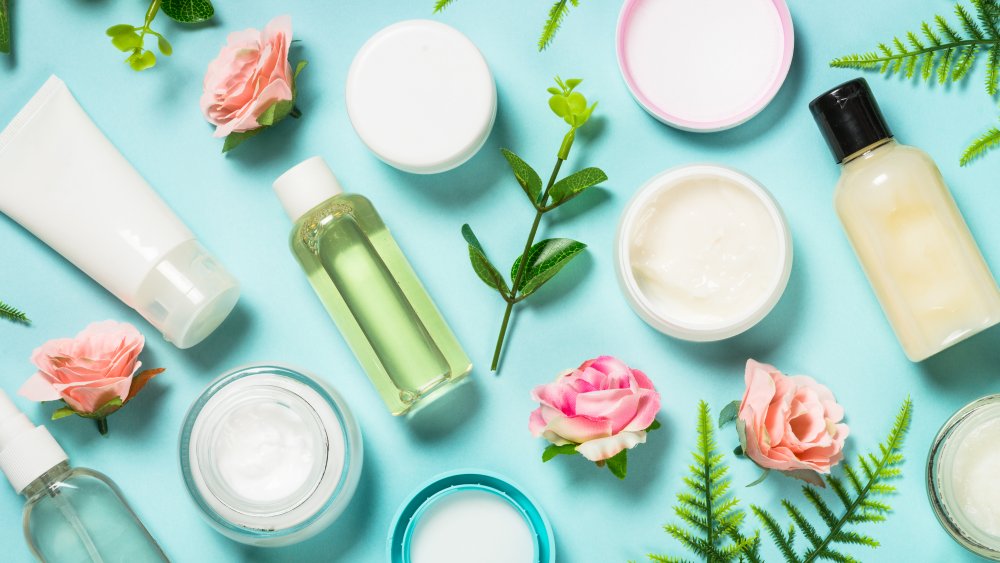What You Should Know Before Tackling A Whitehead
Clogged pores and unexpected breakouts plague many of us, even when we thought we might have outgrown such things roughly around the time we leveled up from prom dresses to cocktail attire. But alas, whiteheads are virtually inevitable on occasion. Luckily though, scarring or other irritation when dealing with them doesn't have to be.
Healthline calls whiteheads a type of acne that forms when things like dead skin cells, oil, and bacteria become trapped within one of your pores. While it's ever-so-tempting to just try and extract a whitehead with your fingers as soon as you notice one in the mirror, that's probably not the best idea, at least not without considering a few things and employing certain technique first.
Why you probably shouldn't just pop a whitehead
When you wake up in the morning and look in the mirror only to notice a whitehead rearing its, well, ugly head, it's difficult to resist the impulse to pop or squeeze it right away just to get rid of it. But doing that not only risks pushing the clog deeper into the pore, but even if you do successfully pop it, you can spread the bacteria around and also risk scarring.
Dr. Rachel Nazarian, a board-certified dermatologist in New York City, tells Pure Wow, "Most dermatologists agree that it's best to keep your hands off them." She acknowledges there are times you just really really need to get rid of a particularly prominent one, in which case, there is a better time to try and see if it can be safely opened. "This is preferably after you shower, when the skin is softened," she says. "Use a sterile pin to gently pierce the top-most superficial layer of the whitehead, then, press down lightly on the lateral edges of the spot to see if it drains. If the whitehead does not easily yield, do not continue to press or manipulate the area." And if you go too far and cause bleeding or other damage to the area, she recommends gently cleansing the area and then applying a topical antibiotic ointment or hydrocortisone, and Aquaphor or Vaseline to seal it in. Covering it from the sun until it is healed is also a good idea to prevent scarring.
How to treat and prevent whiteheads
Rather than popping (with those rare exceptions), the best way to treat whiteheads is to use products to help break them up and dislodge them. Products containing salycilic acid, glycolic acid, and retinoids help to exfoliate the skin and dissolve some of the things that cause whiteheads like dead skin cells and excess oil. Plus, salycilic acid is also great for blackheads, glycolic acid helps reduce scarring, and retinoids are good acne fighters (via Pure Wow).
Of course, the best treatment is prevention. Choose the right ingredients in your skin products. "People who are prone to whiteheads should avoid occlusive products, such as thicker creams and ointments," says Nazarian. "You should also steer clear of ingredients like lanolin, cocoa butter, beeswax and coconut oil, all of which have a high risk of causing whiteheads." Instead, she suggests aiming for lighter skincare products labeled "non-comedogenic," which means they won't clog pores. She also encourages us to be patient with the treatments we do decide on, because in order to see results, six weeks of a consistent regimen is generally required.


